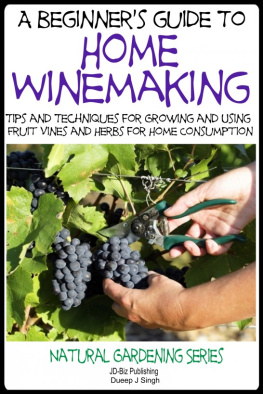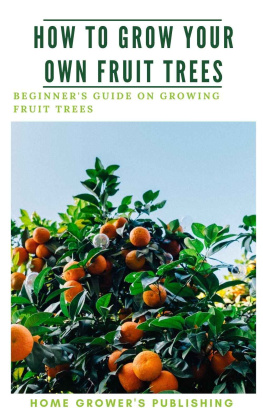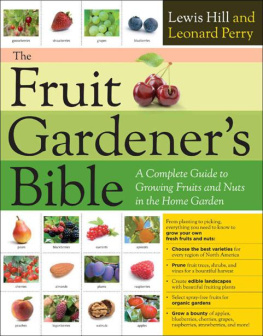A Beginners Guide to Home Winemaking
Tips and Techniques for Growing and Using
Fruit Vines and Herbs for Home Consumption

Natural Gardening Series
Dueep J. Singh
~~~
Smashwords Edition
JD-Biz Publishing
All Rights Reserved.
No part of this publication may be reproducedin any form or by any means, including scanning, photocopying, orotherwise without prior written permission from JD-Biz CorpCopyright 2014
All Images Licensed by Fotolia and 123RF.
Sketches by Dueep Jyot Singh
Disclaimer
The information is this book is provided forinformational purposes only. It is not intended to be used andmedical advice or a substitute for proper medical treatment by aqualified health care provider. The information is believed to beaccurate as presented based on research by the author.
The contents have not been evaluated by theU.S. Food and Drug Administration or any other Government or HealthOrganization and the contents in this book are not to be used totreat cure or prevent disease.
The author or publisher is not responsiblefor the use or safety of any diet, procedure or treatment mentionedin this book. The author or publisher is not responsible for errorsor omissions that may exist.
Warning
The Book is for informational purposes onlyand before taking on any diet, treatment or medical procedure, itis recommended to consult with your primary health careprovider.
Smashwords Edition, License Notes
This ebook is licensed for your personalenjoyment only. This ebook may not be re-sold or given away toother people. If you would like to share this book with anotherperson, please purchase an additional copy for each recipient. Ifyoure reading this book and did not purchase it, or it was notpurchased for your use only, then please return to Smashwords.comand purchase your own copy. Thank you for respecting the hard workof this author.
Table of Contents

I am too young to drink Wine. So this does aswell!
Introduction
According to the ancient Greeks, it was aDemi-God, Dionysius, who taught them the pleasures of making wineand drinking it. No wonder he was always shown with grapevineleaves around his head.
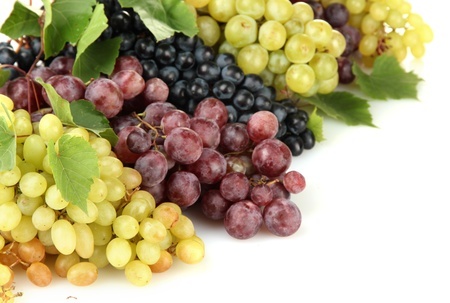
The Romans called him Bacchus and alsoEleutherios, which meant the Liberator. The idea was those takingpart in celebrating his existence were free from care and worry.That was because they drank freely of the fruit of the grape duringtheir Bacchanals.
A Greek friend told me that according toGreek legend, Dionysius was supposed to have come to India, andAlexander the great during his conquest entered an Eastern citycalled Nysa , of which the inhabitants told him of its raising bythis demi-God. He taught them practices which were incorporated intheir own social rituals and festivals.
Ah, well, that is a good myth, but then winewas definitely not unknown in the East. It was one of the firstgourmet pleasures discovered and appreciated for millenniums. So ifthis demigod came to the Indian subcontinent he would have been fedMadira or Soma Rasa -the ancient and traditional drink of thegods!
The names Dennis, Denise and Dion arederivatives from this original Greek name.
So for all of us who would like to raise atoast to the gods in a glass of homemade wine, this book is goingto teach you how you can grow vines very successfully in sunnyatmospheres. After that, it is going to teach you how to make winesfor home consumption.
If you look at winemaking practices, whichare being practiced today, it is a very scary and complicatedprocess. This is because of our usage of complex and complicatedtools. The practices I am going to teach you have been in use forcenturies. You are not going to be buying expensive tools. You aregoing to be making wine, the traditional way.
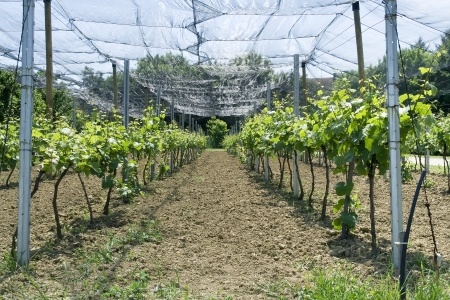
Let us start by
Growing Grape Vines
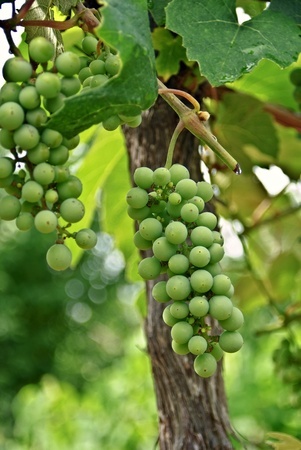
You need a sunny atmosphere in which to growgrapevines. They do not enjoy too much of the frost. However, manynew varieties are available today, which do not need lots of sun.You may want to ask your local nursery for these righties dependingon your location.
Desert grapes are very attractive anddelicious. It is necessary to protect them from gales, so grow themin sheltered areas.
Preparation of the soil
The grapevines grown on their own roots arenot particularly fussy about the soil, but the site has to be welldrained and tolerably rich in organic compost. They are going to dowell in normal soil but on very rich soil, they may give too muchleaf. While they may grow on very poor soil, such as gravel, sand,and chalk, they are not going to give you the best results unlessyou keep on adding mixed fertilizer regularly to the soil.
When you are preparing the site, dig deepinto the ground to break up any hard soil below the surface. If thesoil is poor, apply bone meal at the rate of half a pound firstgraveyard.
Planting your vines
Buy plants which are one year old. Theseplans have already established roots. And if they are to be grownwith the support of a wall, it is best to plant them so that themain stem can be trained horizontally.
If several horizontal stems are needed, it isbest to make each one from a separate vine. These grapevines can begrown close together.
If you are growing these vines apart in theopen, plant them in rows 4 feet apart. The distance between therows should be 3 feet, so that you can walk about them freely, andalso use gardening tools and implements.
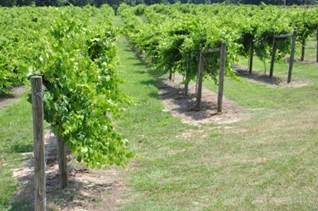
Plant in the spring, unless the site is wellprotected from cold. Otherwise, these plants are going to die offin a wet and hard winter if they have only just been moved.
Maintenance
These need occasional shallow digging andhoeing to keep down the weeds. Let the weeds grow in the autumn anddig them out shallowly in the winter. They are now going to be yourcompost. As the vines are extremely deep-rooted they will notsuffer from drought or damage by shallow digging after the secondyear.
These vines, however, are extremelysusceptible to drought in the first spring after planting. They aregoing to need watering until they are established and growing fast.Cold winds in the spring may kill many vines in their first year ifthey are dry at the roots.
If the vines are in normal soil, they willgrow at least one feet high in the second year, and in rich soil 5feet in the first year. If they do not reach 5 feet in the secondyear, apply organic fertilizer. This rate of growth is the onlycriterion for adding more fertilizer.
Do not mulch or cultivate in early springbecause if the soil is covered or is very loose your plants aremore liable to damage from spring frost. That is because the soilis going to stay colder for a longer period of time.

